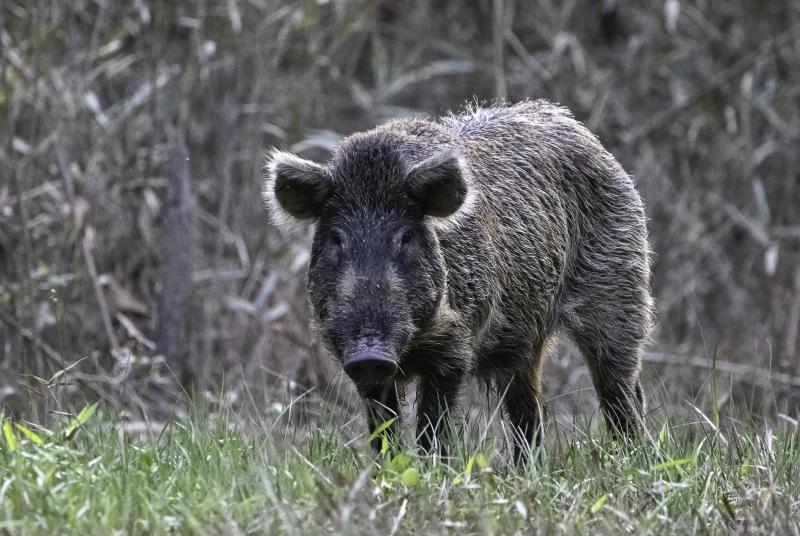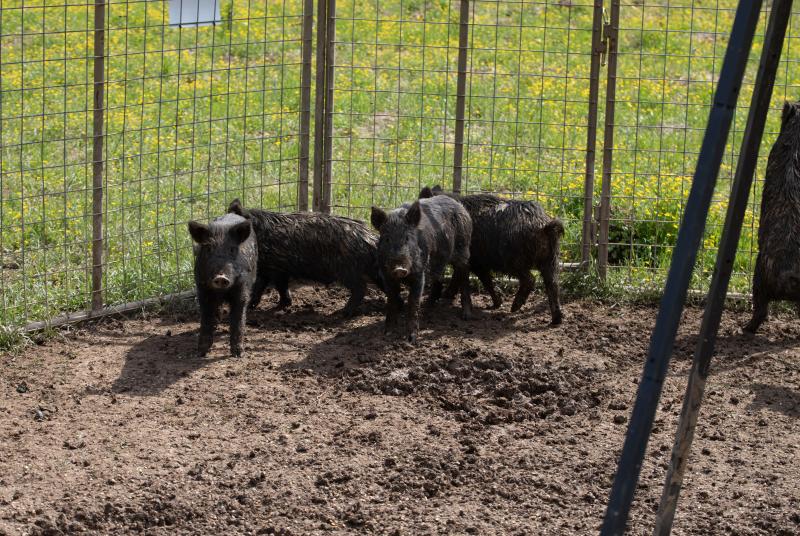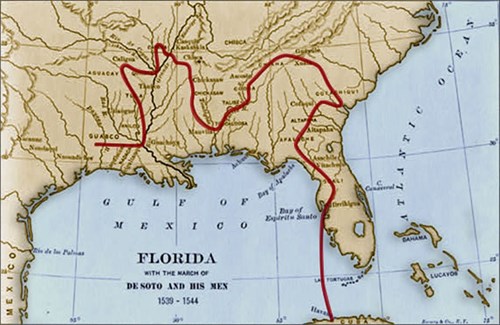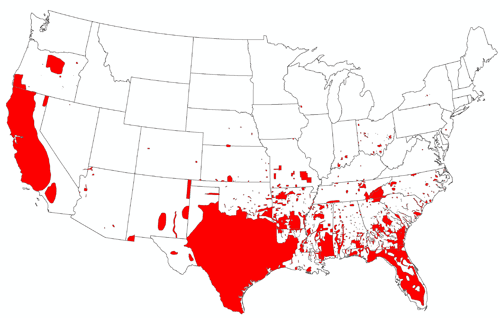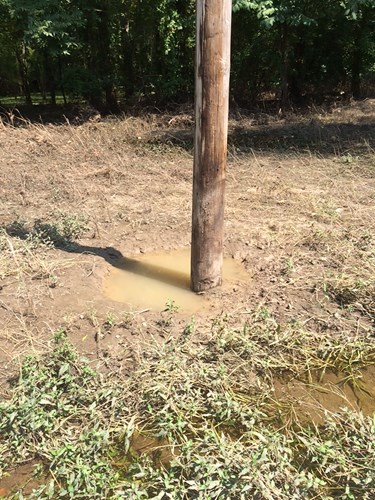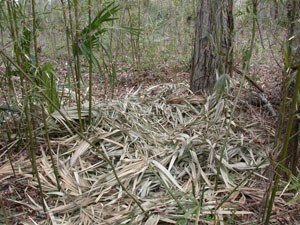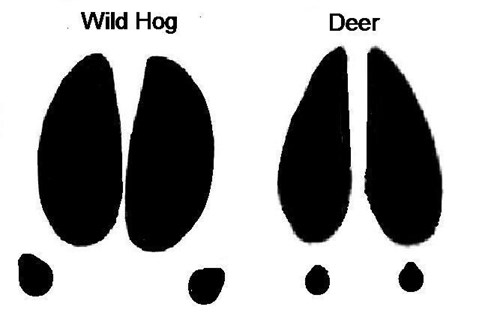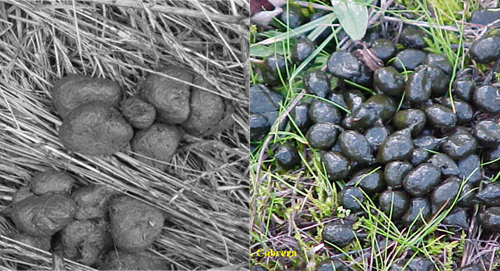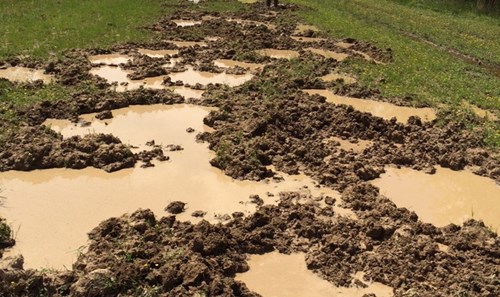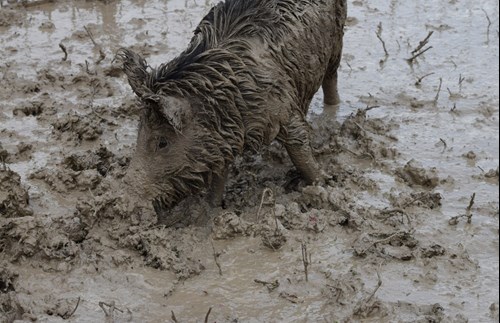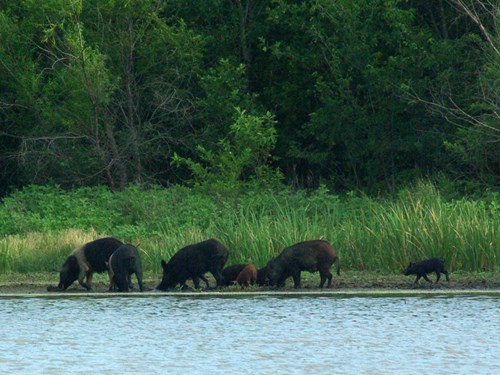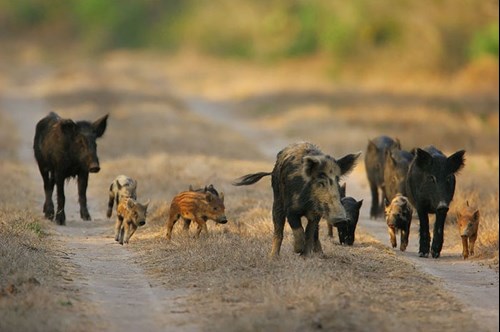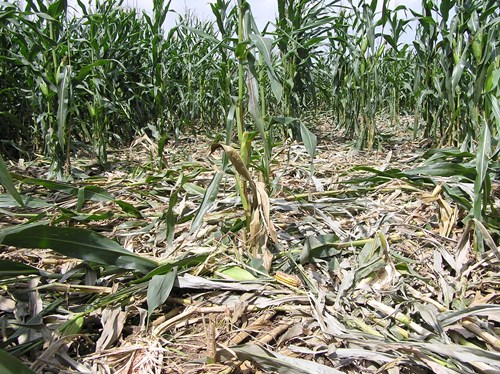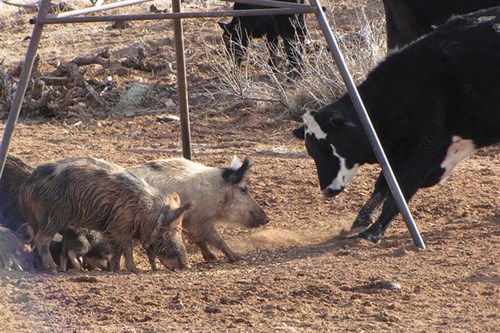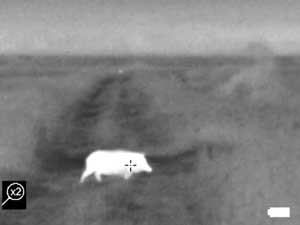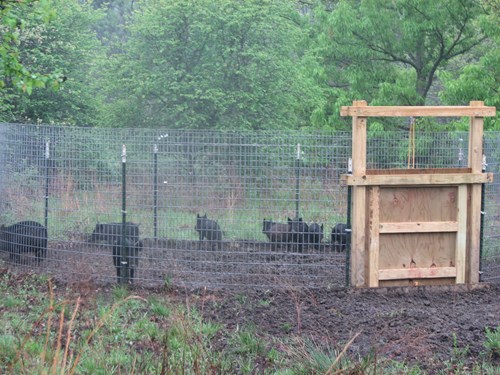Definition of a Wild Hog
According to Admin Code Title 40, Part 2, Rule 7.1, "Wild hogs are hereby defined as any feral hog, wild swine, Russian boar, or any pig that is not a domesticated pet or livestock, or has a wild looking appearance or behavior."
Hunting - Private Lands
License Requirements: Residents: a valid Lifetime, All Game, or Sportsman's License unless otherwise exempt.
Nonresidents: a valid NR All Game Hunting License.
Hunting with archery equipment and/or Primitive Weapons during archery or primitive weapon season: Valid Lifetime, All game, or Sportsman's License and the Archery/Primitive Weapon Permit, unless otherwise exempt.
Other Requirements: Designated agents of the landowner/leaseholder must have written permission from the landowner/leaseholder in his or her possession. A designated agent is anyone who is not the deed holder or leaseholder and has permission by a landowner or leaseholder to hunt or trap on a specific property.
Permission letter must include:
- the contact information of the landowner or leaseholder
- the contact information of the permitted person
- a specific date of expiration
- signature of the landowner/leaseholder
- signature of the permitted person
Hunter Orange: Persons hunting wild hogs during any open gun season on deer will be required to wear, in full view, 500 square inches of solid unbroken hunter orange, unless they are hunting from a fully enclosed stand.
Hours/Season: Landowners and leaseholders may hunt nuisance animals year-round at any time of day or night with no weapon/caliber restrictions on property titled in their name or otherwise owned, or leased by them.
Designated agents (persons with permission) of the landowners / leaseholders may hunt nuisance animals year-round at any time of day or night with no weapon / caliber restrictions, provided they have written permission from the landowner or leaseholder in his or her possession, when hunting nuisance animals. Permission letters must be signed and dated by the landowner or leaseholder, and shall include the contact information of the landowner or leaseholder; the contact information of the permitted person; and a specific a date of expiration.
Hunting with Dogs: Wild hogs may not be hunted or pursued with dogs during the open spring turkey hunting season.
Bag Limit: There is no daily or seasonal bag limit for wild hogs in Mississippi.
Hunting - Public Lands
Consult specific regulations on any public lands before hunting wild hogs. Regulations may be more restrictive than private lands. "On public lands, the governmental entity charged with the management of said lands may or may not allow the taking of nuisance animals (wild hogs) subject to applicable laws, rules, or regulations. It is the hunter's responsibility to check with the entity managing the property before hunting nuisance animals (wild hogs) on those lands."
MDWFP Wildlife Management Areas (WMA) Properties: Wild hogs may be taken incidental to hunting activities during any open hunting season with weapons and ammunition legal for that hunting season.
Trapping - Private Lands Only
Legal Wild Hog Trap Definition
"A wild hog live-cage-type trap is described as a permanent or mobile containment system made of any type material capable of confining the mobility of a wild hog unless otherwise removed. The trap must consist of a trap door, slide gate, or similar mechanism. These traps must have at least 50% of the roof open to allow non-targeted deer, turkey, or bear the ability to escape."
License Requirements: Either a valid Lifetime, All game, Sportsman, or Trapping License, unless otherwise exempt.
Trap Operation: All live-cage-type traps must be checked every 36 hours. All non-target wild or domestic animals caught must be removed or released immediately upon detection.
Trap Labeling: Any live-cage-type trap used to trap wild hogs must be tagged or labeled in plain view (written in waterproof ink or stamped) with the owner or user name, address, phone number, and/or MDWFP customer ID#.
Hours/Season: No hourly or seasonal restrictions.
Bag Limit: No bag limit.
Note : Any one who wishes to trap hogs inside a CWD management zone must first obtain a animal control permit.
Use of Bait
Feed/bait may be used to take wild hogs. Any food or food products may be used year-round for the purpose of taking wild hogs with the following exceptions:
- Grain or grain products may be placed on the ground, if placed inside any legally designed live-capture-type trapping device for the sole purpose of trapping wild hogs.
- There are no poisons or toxic baits labeled for legal use to take pigs or wild hogs in the United States. Placement of poisons and toxic materials for the purpose of killing any wildlife and domestic animals inconsistent with label instructions may constitute state and federal violations and fines and punishment.
Selling of Wild Hog Meat
No meat or other part of a wild hog may be sold without having first been inspected and approved by the U.S. Department of Agriculture and/or the Mississippi Department of Agriculture and Commerce pursuant to the laws, rules, and regulations of those entities.

